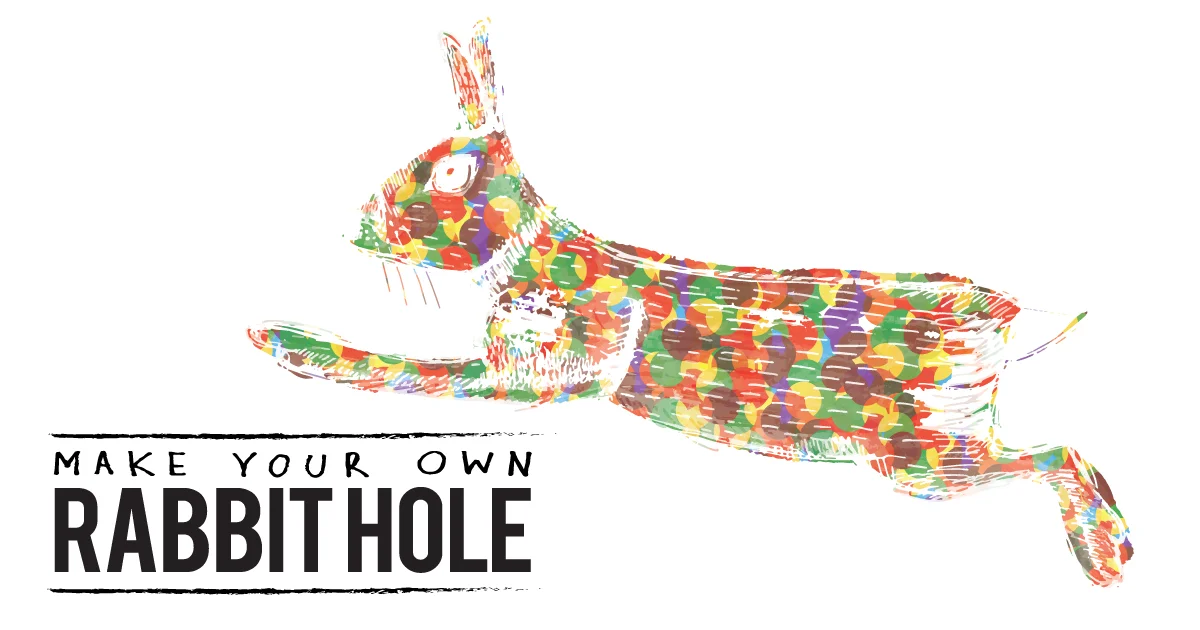Sister Corita Kent: “Consider everything an experiment”
/Words and Cover illustration by Ant Gray
One Catholic nun influenced an entire generation of designers, artists and filmmakers. During the Vietnam War, she stopped being a nun and became a full-time artist and social activist. In the Sixties, people knew her as Sister Mary Corita Kent.
If women’s contributions to the art-world are often glossed over or forgotten entirely, then the contributions of Catholic nuns are probably doubly so. So it’s not surprising that many people have never heard of Sister Mary Corita Kent.
But in the late-Sixties in California anyone who was anyone knew who she was. Her friends included Alfred Hitchcock, John Cage, and filmmaker and designer Saul Bass. Even Marshall McLuhan—the cultural theorist who said ‘the medium is the message’—was a fan.
In 1966, she was named ‘Woman of the Year’ by the Los Angeles Times. A year later, she was on the cover of Newsweek with the headline ‘The Nun: Going Modern.’
Corita Kent wasn’t just a nun. She was an artist, teacher and social activist.
“I first took note of her,” says Art Chantry—a designer who is best known for his album covers for Nirvana, Soundgarden and Hole— “when I tripped across a series of poetry/prose books where she clipped newspaper and magazine headlines and created silkscreen visual poems set with the found typography. They were absolutely gorgeous and, frankly, totally Punk. Upon closer inspection, I realised that these were all created back in the early 1960s—and by a Catholic nun!”
Ten ‘Habits’ of Highly Creative Nuns
For 30 years Kent lived, worked and taught at the Immaculate Heart College in Los Angeles, eventually becoming chair of its art department.
On the wall of the classroom where she taught painting and printmaking was a list of ten rules. Choreographer Merce Cunningham liked them so much he too had them posted up in his dance studio.
Rule 1: Find a place you trust, and then try trusting it for a while.
Rule 2: General duties of a student—pull everything out of your teacher; pull everything out of your fellow students.
Rule 3: General duties of a teacher—pull everything out of your students.
Rule 4: Consider everything an experiment.
Rule 5: Be self-disciplined—this means finding someone wise or smart and choosing to follow them. To be disciplined is to follow in a good way. To be self-disciplined is to follow in a better way.
Rule 6: Nothing is a mistake. There’s no win and no fail, there’s only make.
Rule 7: The only rule is work. If you work it will lead to something. It’s the people who do all of the work all of the time who eventually catch on to things.
Rule 8: Don’t try to create and analyse at the same time. They’re different processes.
Rule 9: Be happy whenever you can manage it. Enjoy yourself. It’s lighter than you think.
Role 10: “We’re breaking all the rules. Even our own rules. And how do we do that? By leaving plenty of room for X quantities.” —John Cage
HINTS: Always be around. Come or go to everything. Always go to classes. Read anything you can get your hands on. Look at movies carefully, often. Save everything—it might come in handy later.
Kent was anything but conventional in her teaching.
She used examples of Francois Truffaut’s films in her lectures. She played rock music during her classes. She organised field trips supermarkets and car washes to encourage her students to use their surroundings as a basis for their designs.
She also took her students to the studios of her famous friends, including Charles and Ray Eames, designers of the famous Eames Lounge Chair. And these visits were often reciprocated. “Among the most fundamentally inspiring experiences of my life have been my visits to the Art Department at Immaculate Heart College,” said Buckminster Fuller, the American author, designer and inventor.
Over her career, Kent made more than 400 serigraph silkscreen prints. Her Warhol-inspired work, even when addressing political themes, is dazzlingly bright and positive. She drew heavily on pop culture. She used advertising copy, billboards and other signage in her prints. She was fond of incorporating slogans, song lyrics, and quotes from the Bible, Camus, Thoreau and many others.
In 1968, Kent became disillusioned with the Catholic Church—at its reluctance to modernise and accept the idea of equality for women. Kent left her order to become an artist full-time. She made billboard posters for social advocacy groups including International Walk for Hunger and Amnesty International, and she designed many posters promoting peace and protesting the Vietnam War.
Work with shapes and the content will come
Of her ten rules, number four is my favourite:
“Consider everything an experiment.”
Talking about Kent’s teaching in his book Designers Don’t Have Influences, Austin Howe explains:
“Corita approached creative assignments in a similar way to Paul Rand, encouraging her students to never start a project with a content-driven idea, but to focus on shapes, colours, and whatever interested them visually. She believed, rightly, that this process would eventually produce content. This is, of course, the exact opposite of the ham-fisted approach of most advertising people.” (41)
There’s so much possibility in this approach. If we could always predict how things would turn out, we’d never discover anything new or interesting. We’d never surprise ourselves.
Like the Cage quote Kent uses at the end of her rules—there should always be ‘plenty of room for X quantities.’
Liked this story? Sign-up to get Rabbit Hole & Little Dogeared Books delivered to your inbox, plus bonus material, ideas and encouragement to inspire you in your own creative work.

















Painter Tracey Read talks about spending four weeks painting and drawing her way around Italy.